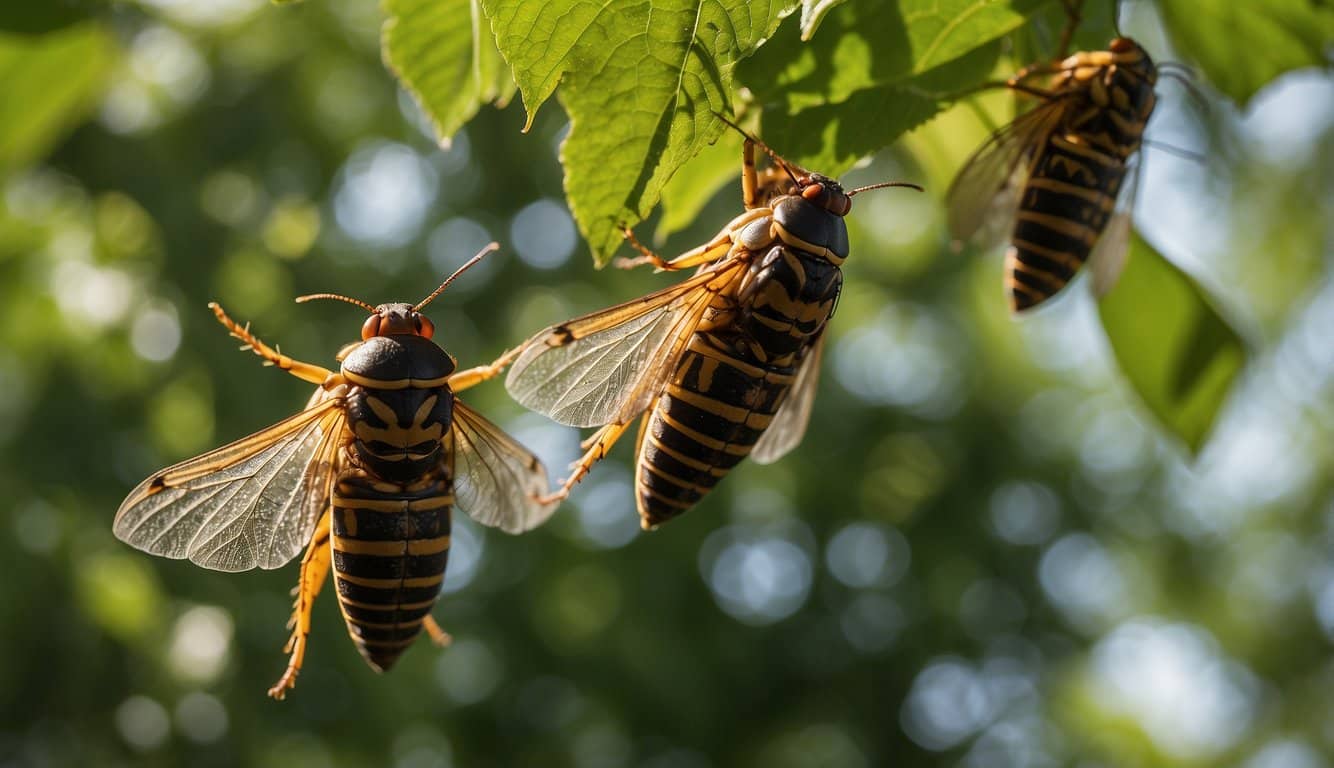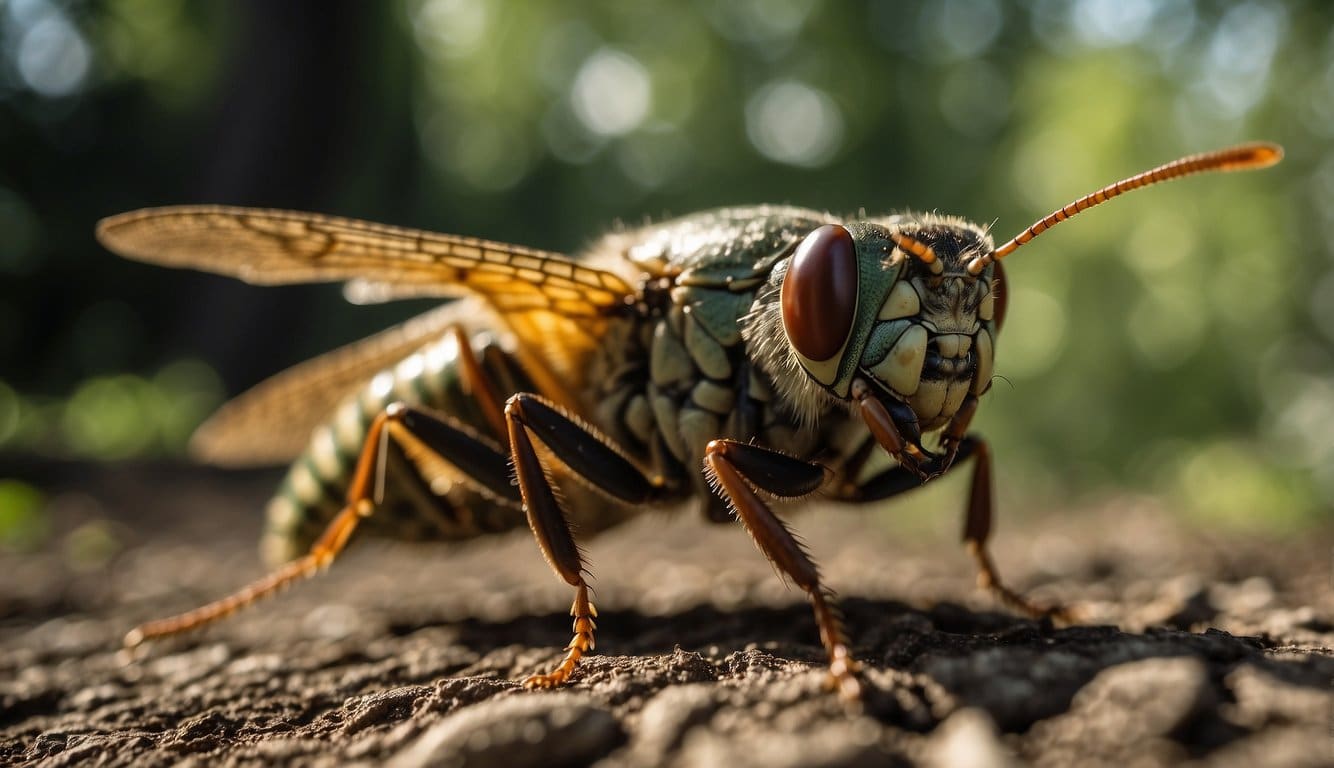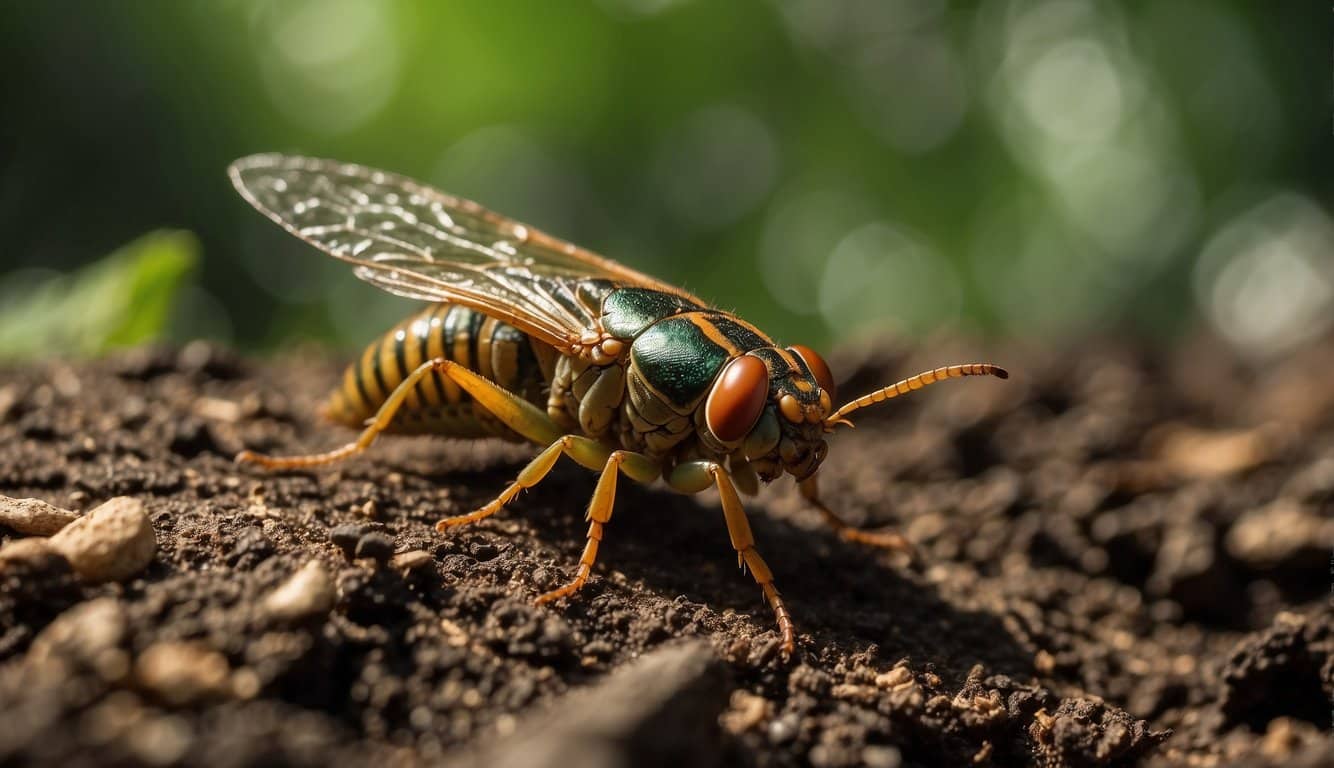Cicada Emergence in Illinois 2024
Get ready for a natural symphony, because 2024 is set to be an exceptional year for cicadas in Illinois.
- Timing: Look out for these winged performers starting in early to mid-May. They’ll be serenading us through mid-to-late May and even into June, depending on mother nature’s mood—especially the soil temperature.
- Timing: NBC Chicago gives us the heads up on the emergence, indicating it hinges on climatic nudges.
- Location: Whether you’re in southern or northern Illinois, you’ll find them popping up in your neighborhood.
- Location: Those in the southern parts can expect the concert to start a tad earlier. Up north? Your wait might be slightly longer. The differences in the regional curtain call are laid out by The Morton Arboretum.
- The Main Event: The star of this event is Brood XIII, the 17-year periodic cicada.
- The Main Event: Prepare your ears for a true spectacle. And when we talk numbers, think big—really big.
- The Main Event: It’ll be billions taking the stage, so don’t be surprised if you feel you’re in a crowd. The sheer volume of these insects is highlighted by Vox, where the massive emergence is mapped out.
Here’s your checklist to catch the show:
- Mark your calendar for early May.
- Listen for the buzz; it signals they’re close.
- Observe the soil. When it hits 64 degrees at 8 inches deep, it’s showtime.
- Enjoy nature’s performance. It’s a once-in-17-years experience!
Remember, cicadas are harmless to humans, so feel free to get up close. Just think of it as a front-row seat to one of nature’s most awe-inspiring events—no ticket necessary!
Species and Broods in Illinois
Get ready for the buzz! In 2024, you’ll experience the fascinating emergence of cicadas in Illinois, and here’s the scoop on what to expect:
What’s buzzing? Illinois is home to some remarkable periodical cicada broods, renowned for their extended life cycles and synchronized emergence. The main event for 2024 involves two significant broods:
- Brood XIII: Also known as the Northern Illinois Brood, which last emerged in 2007.
- Brood XIX: This is the Great Southern Brood, sharing the stage with Brood XIII in 2024.
Timing is everything! These broods are special—they’ve spent 17 years underground and will pop up when the soil warms up in spring. Keep an eye (and an ear) out for them from late April to early June.
| Brood | Description | Last Emergence | Next Emergence |
|---|---|---|---|
| XIII | Northern IL | 2007 | 2024 |
| XIX | Southern IL | 2011 | 2024 |
Species Spectacle: Expect to find the following species adding their chorus to Illinois’ 2024 soundtrack:
- Magicicada septendecim: Recognizable by its beautiful orange wings and black body.
- Magicicada cassini: Smaller than its co-emergents but just as vocal.
- Magicicada septendecula: The quiet one, but don’t let that fool you—it’s here in numbers.
You’re in for an incredible natural phenomenon, so keep your cameras ready, treat your ears to nature’s concert, and soak in the amazing lifecycle of these winged wonders. Just remember, it’s a brief visit—they’ll grace us for a few weeks before bidding adieu for another 17 years.
Predicting Cicada Arrival and Behavior
You’ve marked your calendar, and the buzz is real—cicadas are on their way! Tell-tale signs of their impending arrival in Illinois for 2024 are grounded in a fascinating mix of science and weather-watching. So, what can you expect?
- Ground Temperature: Cicadas have a thing for warmth. Once the ground hits a cozy 64 degrees Fahrenheit, those bugs will be ready for their grand entrance.
- Ground Temperature: That’s typically in mid-to-late May and into June.
- Periodicity: Remember, these are the periodical cicadas you’re waiting for – those famed Brood XIII and Brood XIX.
- Periodicity: They’re on a 17-year cycle, meaning the last time they showed up was back in 2007 and 2021, respectively.
- Regional Patterns: You’re in Illinois, which means you’re on the guest list for this bash.
- Regional Patterns: But the southern party-goers in your state might see these singers before you do, as the cicadas tend to start there and move northward.
Now, here’s your quick glance guide on what to look out for:
- Sunny Days: Better chances of seeing cicadas emerge
- Soil Probes: Digging into the earth could give you a sneak peek
- Tree Bases: These are the staging grounds for their ascent
And while you’re out there, listen out for that quintessential cicada soundtrack. The buzz that grows from a distant hum to a full-blown symphony signals that these winged wonders are taking Illinois by storm. Keep your eyes peeled on the emergence timeline, and ride the wave of this natural phenomenon!
Impacts of Cicada Emergence on Local Ecosystems
In 2024, you’re going to see Illinois buzzing as cicadas make a grand entrance. Here’s how their appearance shakes things up in your local green spaces:
- Soil Aeration: When cicadas burrow out, they naturally till the earth.
- Soil Aeration: Imagine thousands of tiny gardeners giving the soil a good fluff-up for healthier plant growth.
- Nutrient Recycling: All those cicada bodies eventually break down, enriching the ground.
- Nutrient Recycling: It’s like a free fertilization service right at your doorstep.
For Forest Dwellers:
- Birds get a feast; it’s like an all-you-can-eat buffet with these bugs on the menu.
- Small mammals might feel like they’ve hit the jackpot with the protein boost.
Insect Population Dynamics:
- Cicadas provide a distraction for predators, giving other insects a bit of a breather.
- Yet, they might compete with local insects, pushing for their share of the green leafy pie.
For Your Trees:
- Young trees might struggle with the added stress of cicadas laying eggs in their branches.
- Young trees might struggle with the added stress of cicadas laying eggs in their branches.
- Mature trees? They’ll power through, tough as nails, with cicadas as mere temporary guests.
Water Cycle Contribution:
Cicadas have a role here too. Their sheer numbers and life processes add to the local moisture levels.
Water Cycle Contribution:
Think of it as nature’s own little humidifier running full tilt.
Remember, you’re witnessing a rare natural event that has profound effects, from the underground up. Snag those binoculars and enjoy the show responsibly!
For further reading on cicada communities and the monumental emergence, check out Brood XIX and Brood XIII impacts. Your backyard is about to become a bustling hub of life like you’ve never seen before!
Enjoying the Cicada Season Responsibly
As you prepare for the unique natural spectacle of cicadas emerging in Illinois, it’s important to engage with these critters in a way that respects the environment. Here’s how you can witness this event without causing harm:
- Be Informed: Learn about cicadas’ life cycle and their significance to the ecosystem.
- Be Informed: This knowledge will increase your appreciation for their brief above-ground existence.
- Watch Your Step: With potentially large numbers of cicadas appearing, it’s easy to accidentally crush them underfoot.
- Watch Your Step:
- Stick to designated paths.
- Keep an eye on where you step.
- Respect the Brood: These creatures have spent years underground waiting for this moment.
- Respect the Brood:
- Avoid collecting them as souvenirs.
- Let them go about their short life-cycle undisturbed.
For Gardeners:
- Protect Young Trees: Cicadas can harm young trees by laying eggs in the branches.
For Pet Owners:
- Monitor Your Furry Friends: While cicadas are not toxic, too many can cause digestive issues for pets.
- Keep an eye on your pets’ cicada consumption.
Remember to enjoy this incredible natural event, but do it thoughtfully.
Frequently Asked Questions
Curiosity about cicadas is buzzing, especially with the 2024 emergence right around the corner in Illinois. You’ve got questions, let’s dig into some answers!
When can we expect the emergence of cicadas in Illinois?
You can expect these buzzing creatures to start making an appearance in mid-to-late May and continuing into June, aligning with the warming of the ground in spring and early summer.
Is there a schedule to track cicada appearances in Illinois for 2024?
Yes, you can track the cicada appearance schedule through resources like The Morton Arboretum’s 2024 Cicada Emergence Information.
Which areas of Illinois will witness cicada activity in 2024?
The central portion of the state, including areas around Springfield, will be buzzing with activity from Brood XIX, the 13-year cicadas, as well as the 17-year broods.
Do cicadas emerge in the Chicago area, and what’s the 2024 outlook?
Yes, the Chicago area will see cicadas, and in 2024, both the 13- and 17-year broods are expected to emerge, offering a unique natural event.
Are annual cicada sightings expected in Illinois, or only during specific years?
While 2024 is notable for the periodical cicadas, Illinois also experiences annual cicada activity, typically seen during the warmer months of July.
After the 2024 event, when is the next major cicada emergence anticipated in Illinois?
Following the 2024 emergence, the next significant event will be in 2031 with the emergence of a 17-year cicada brood.


